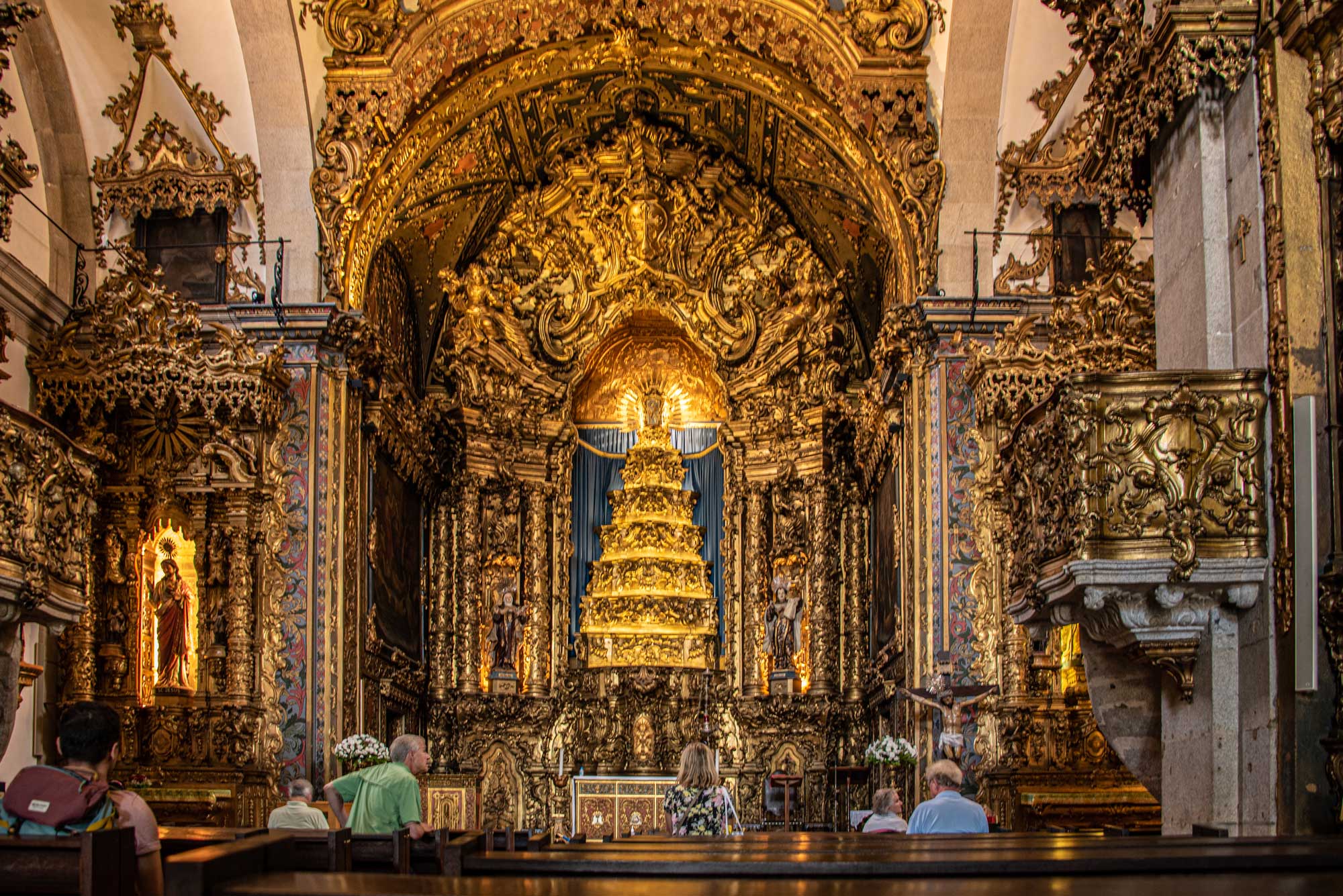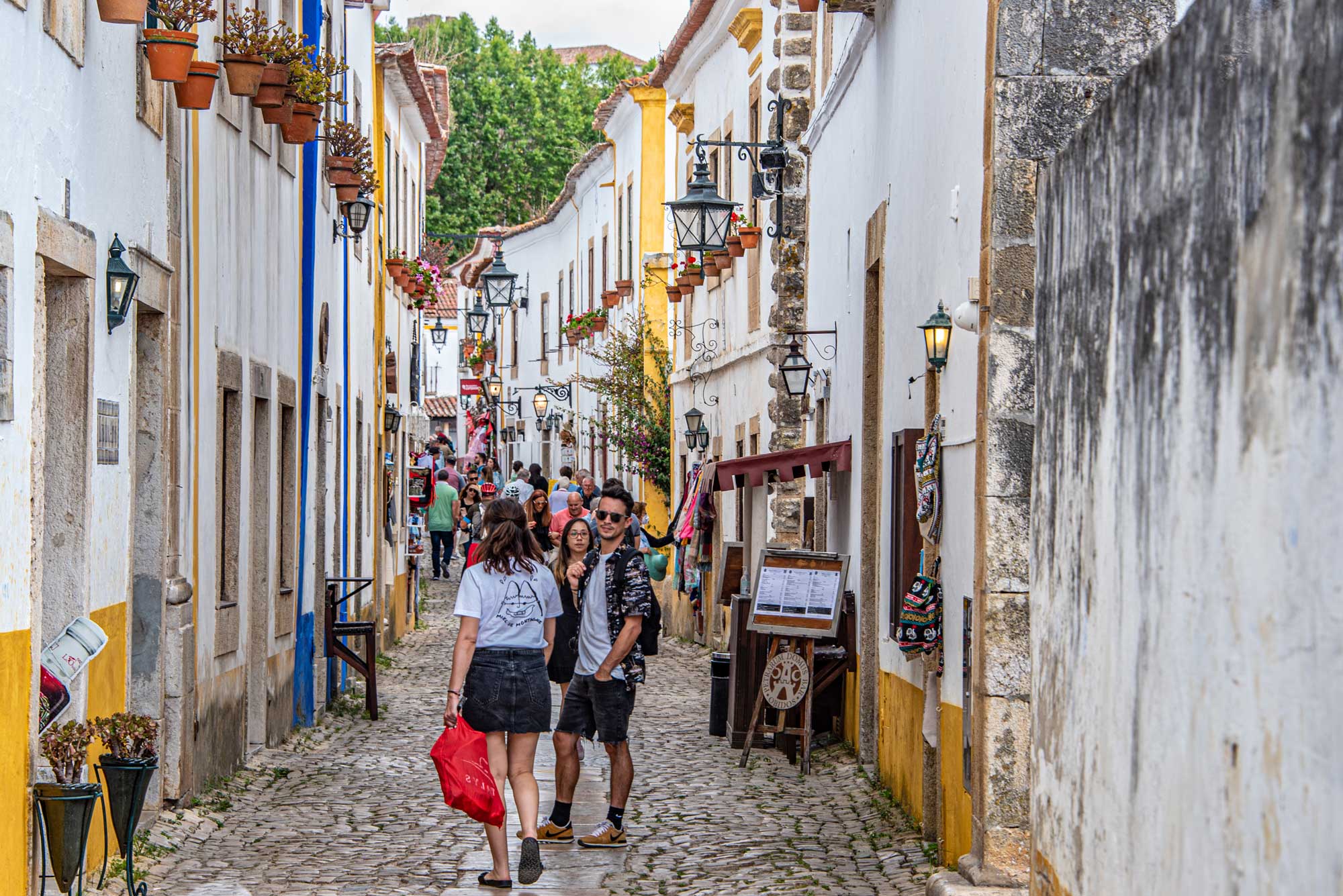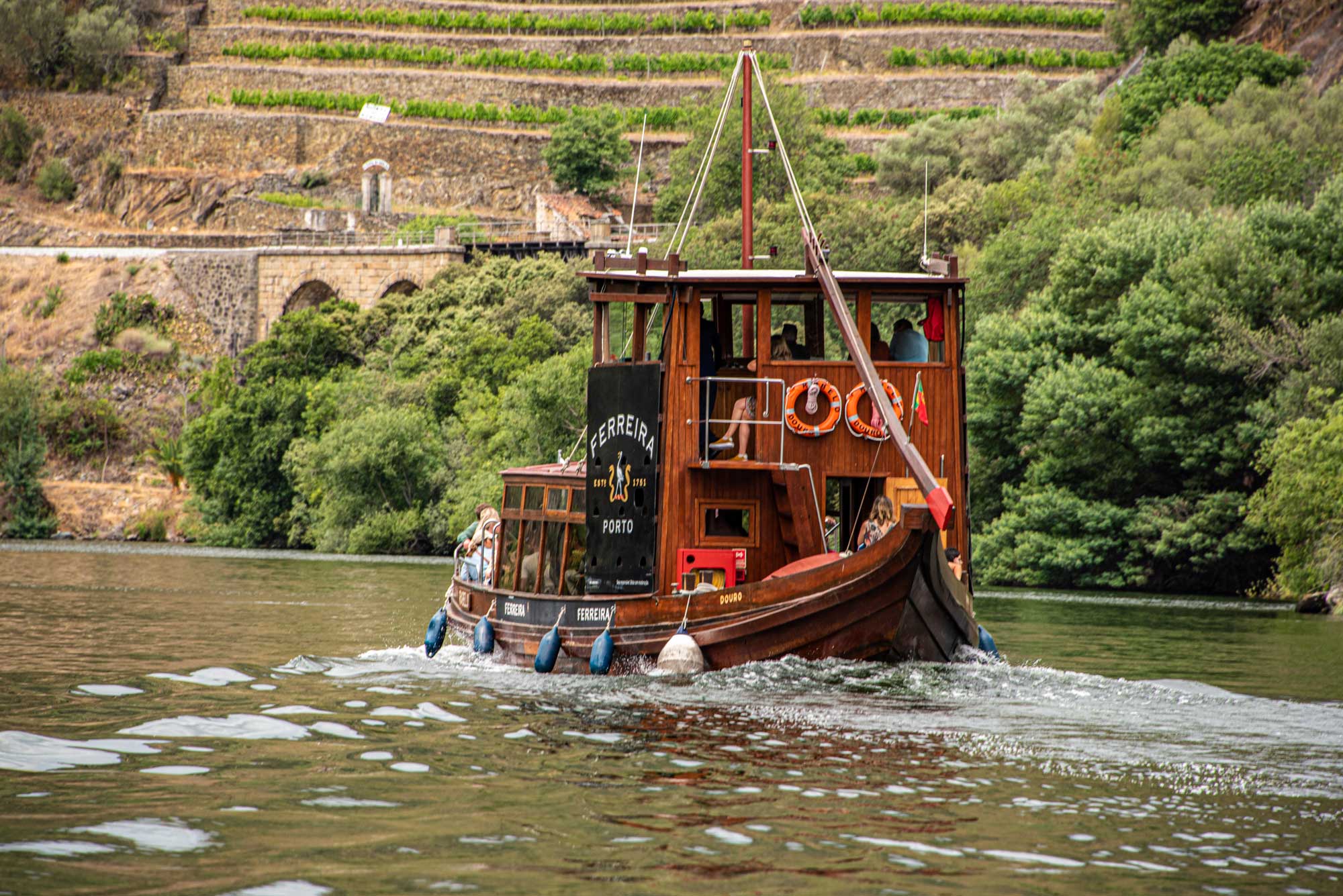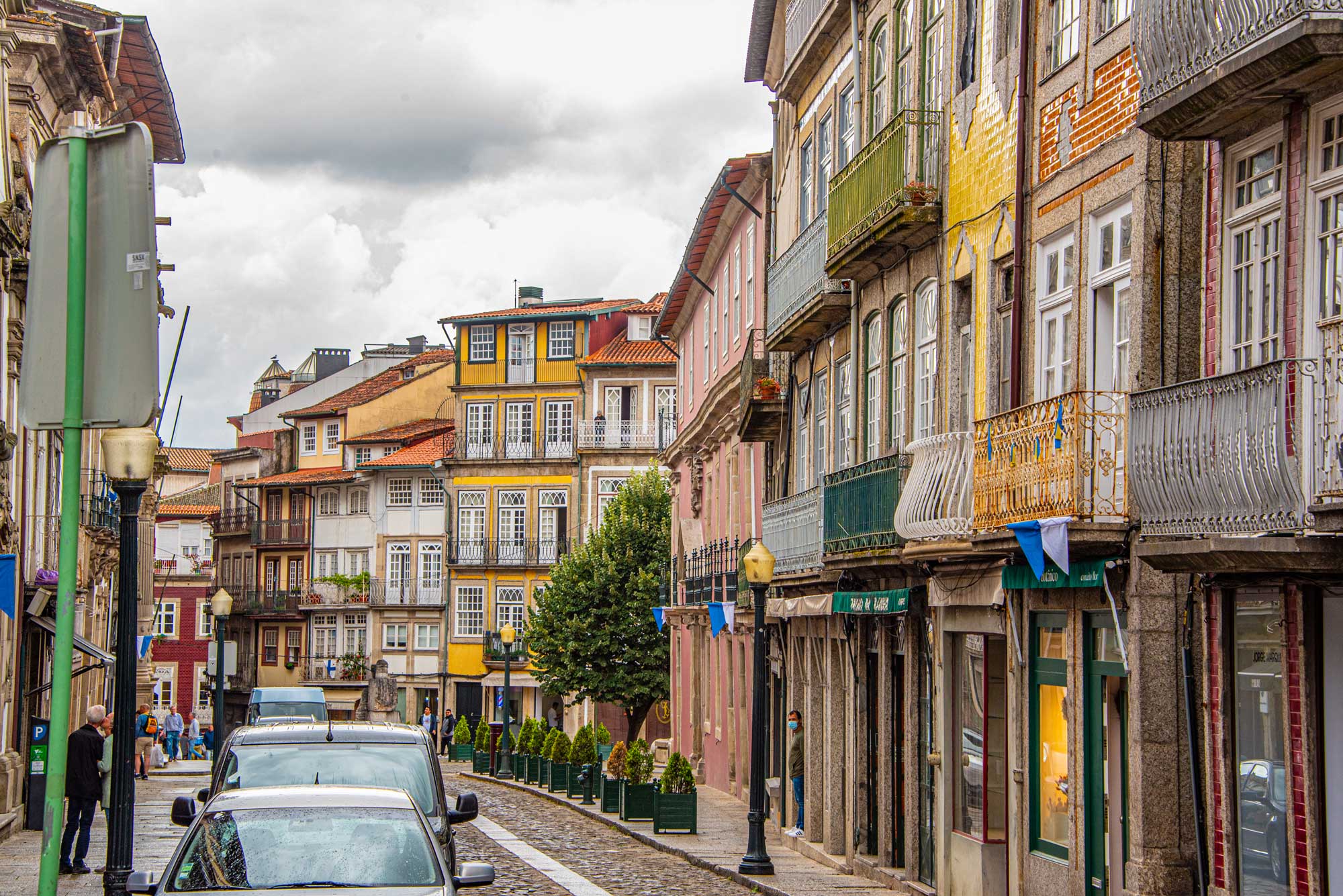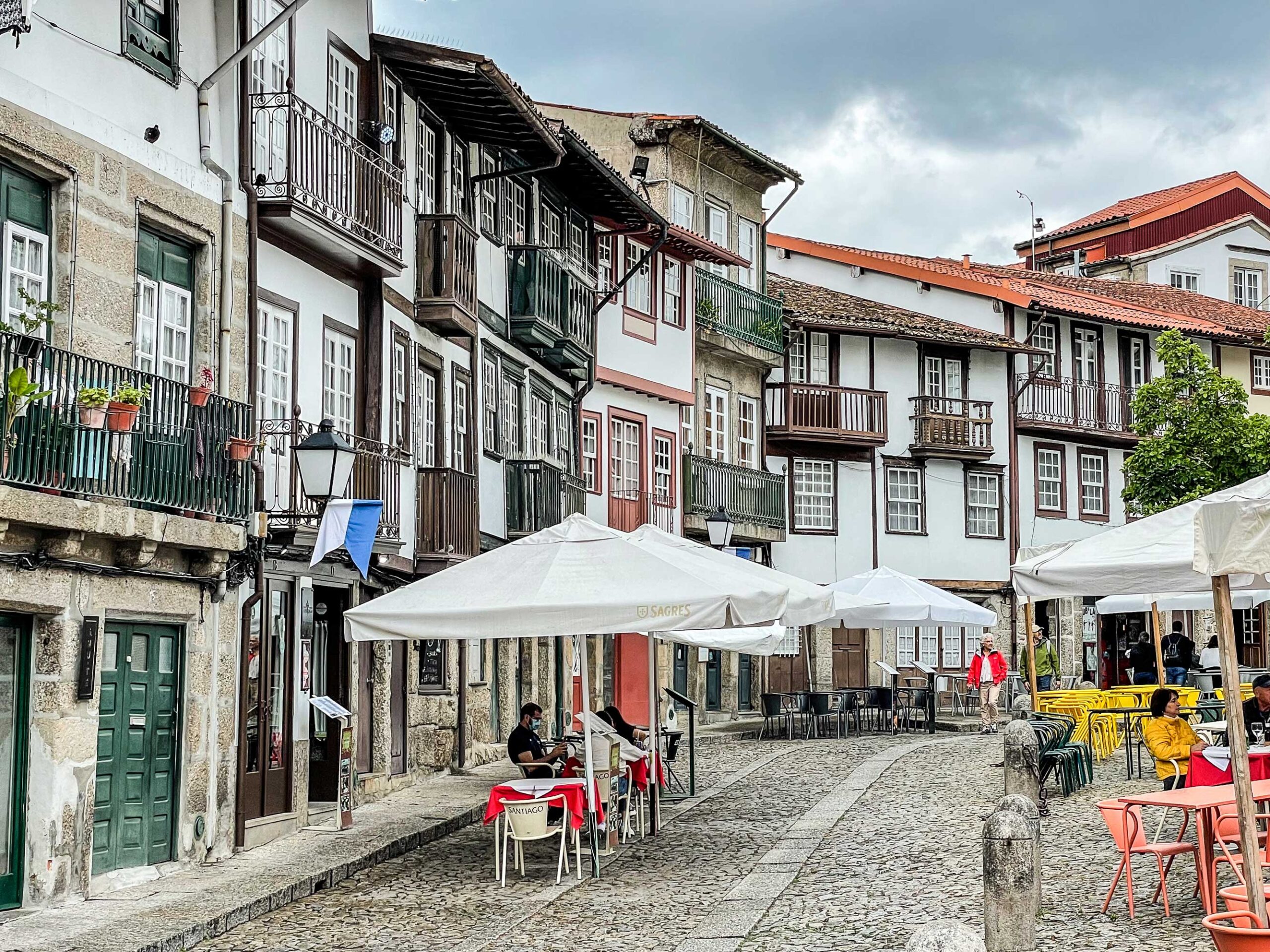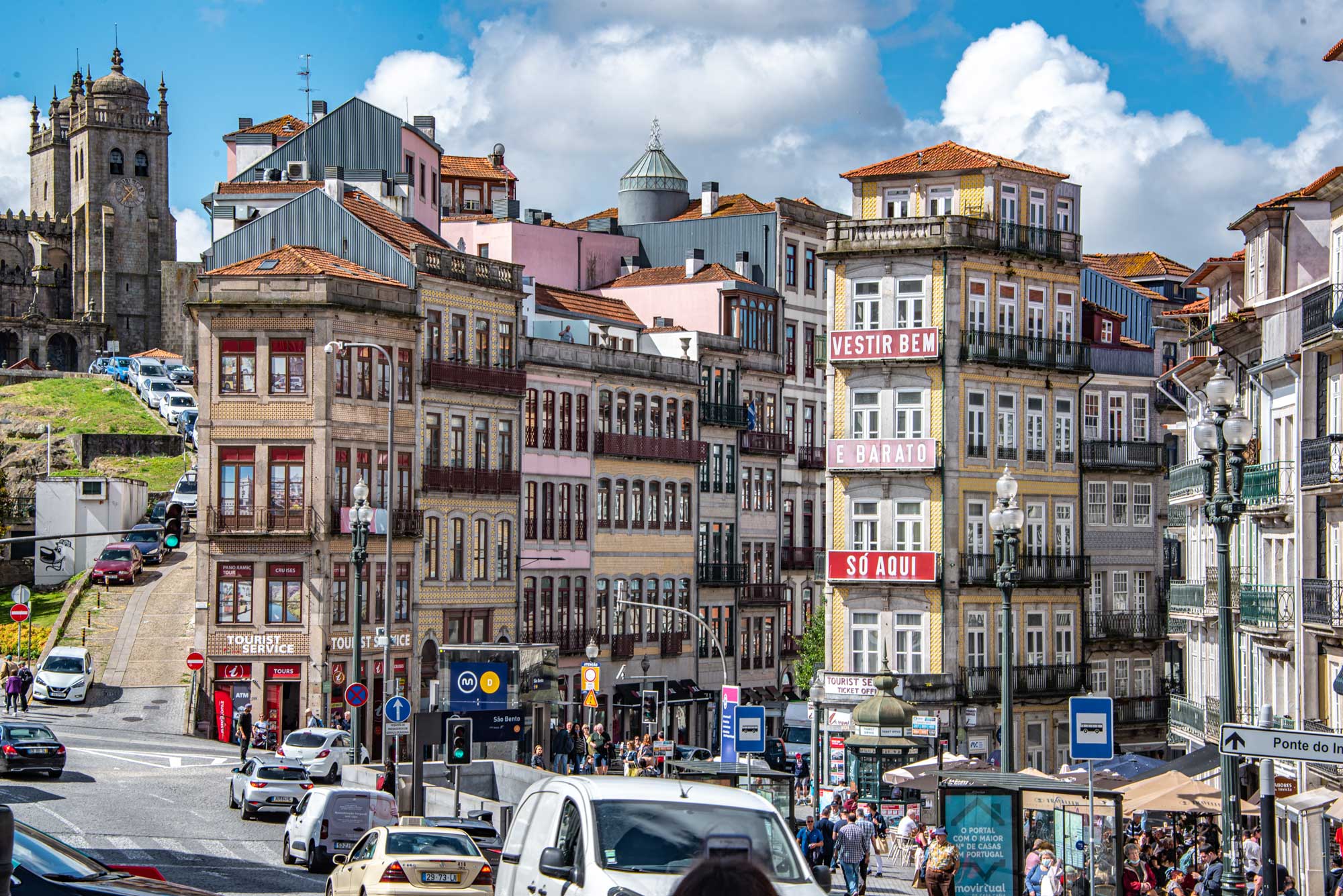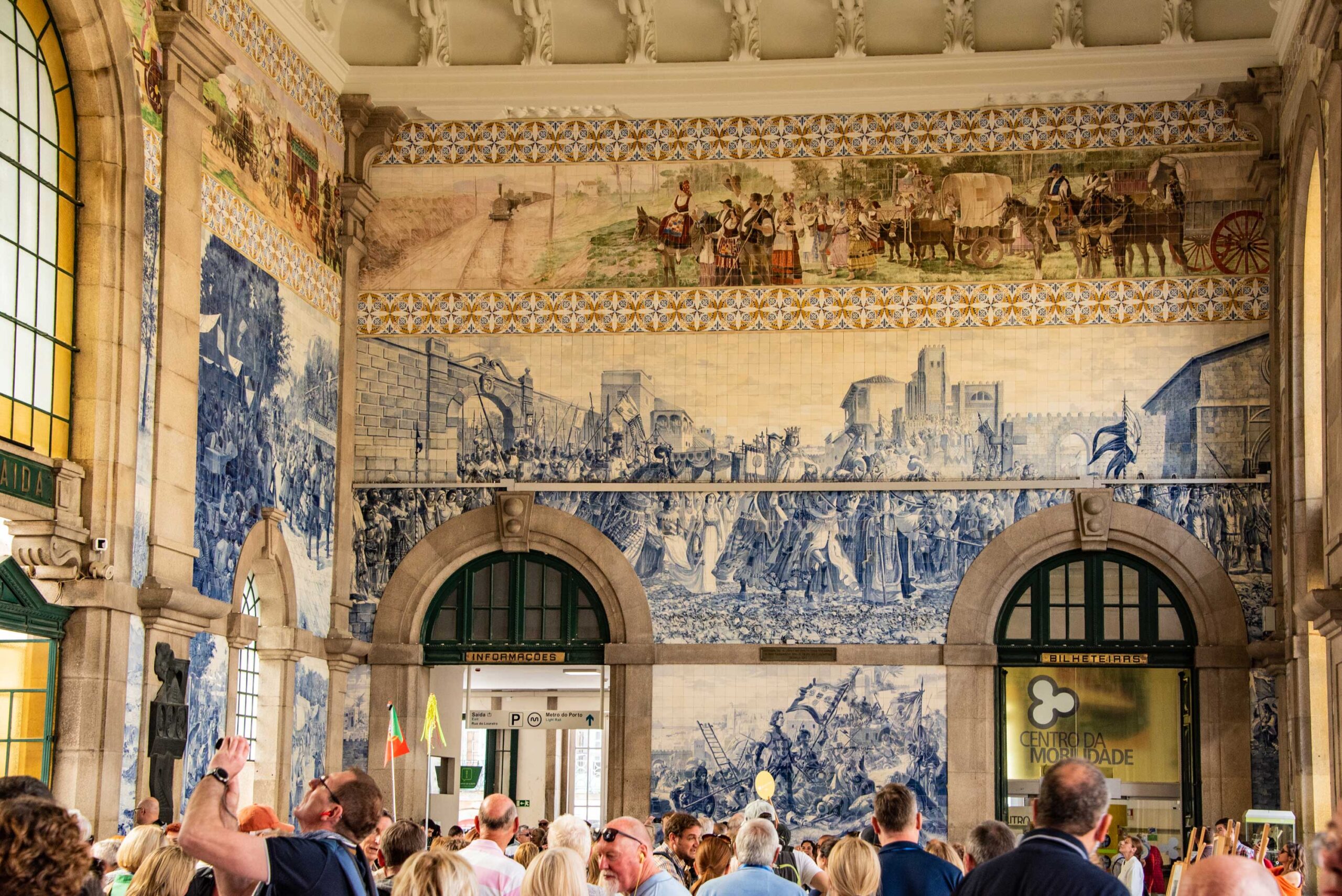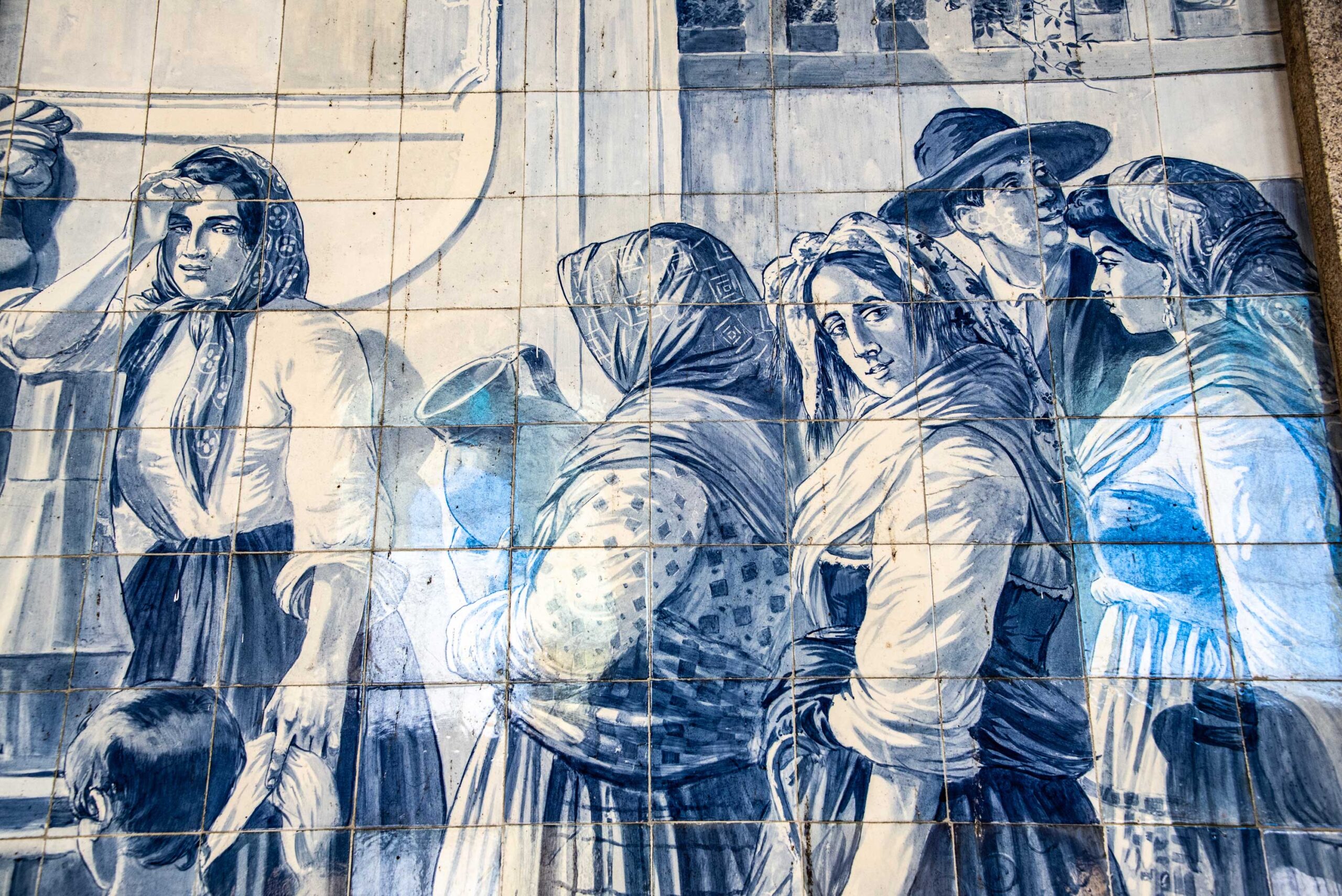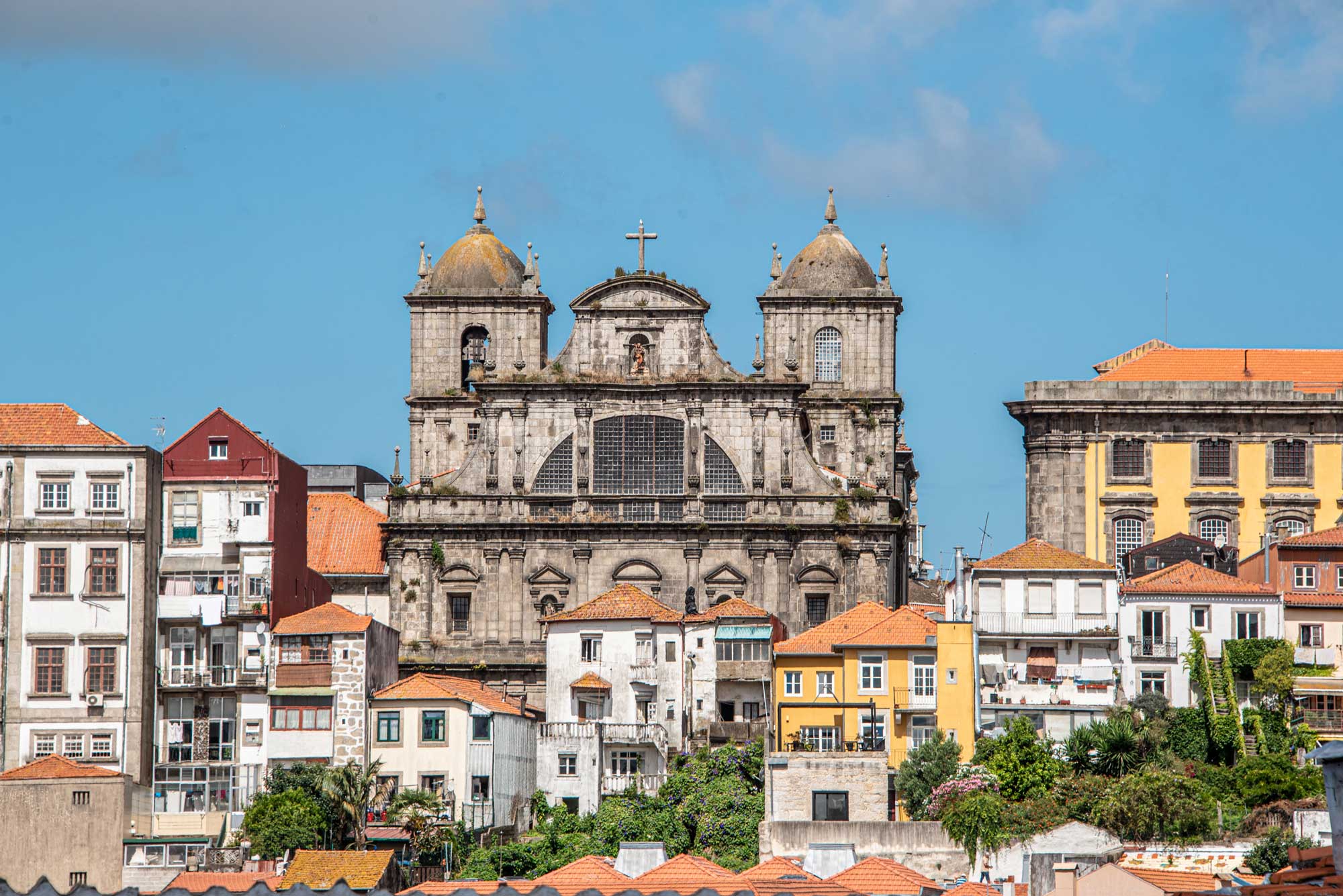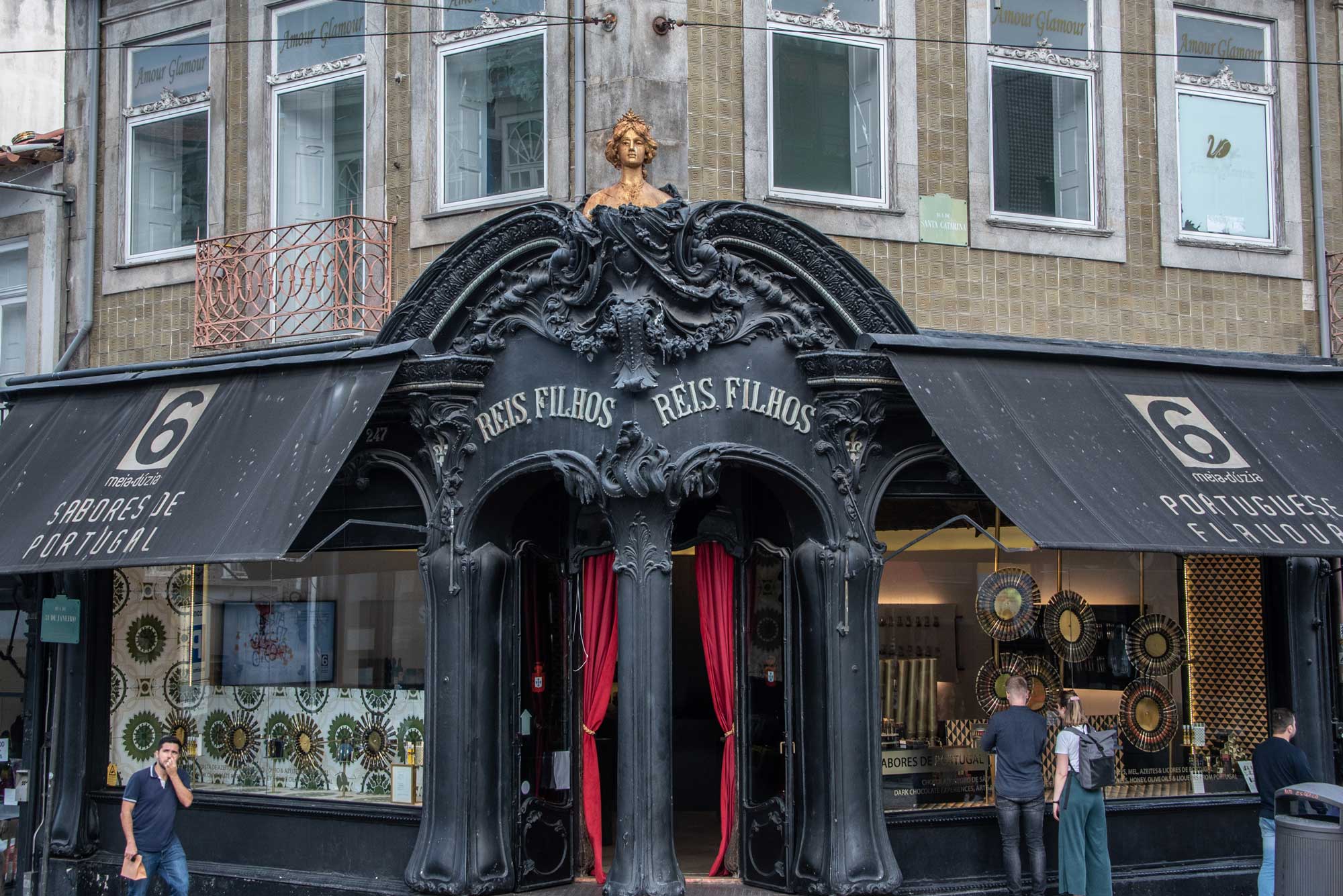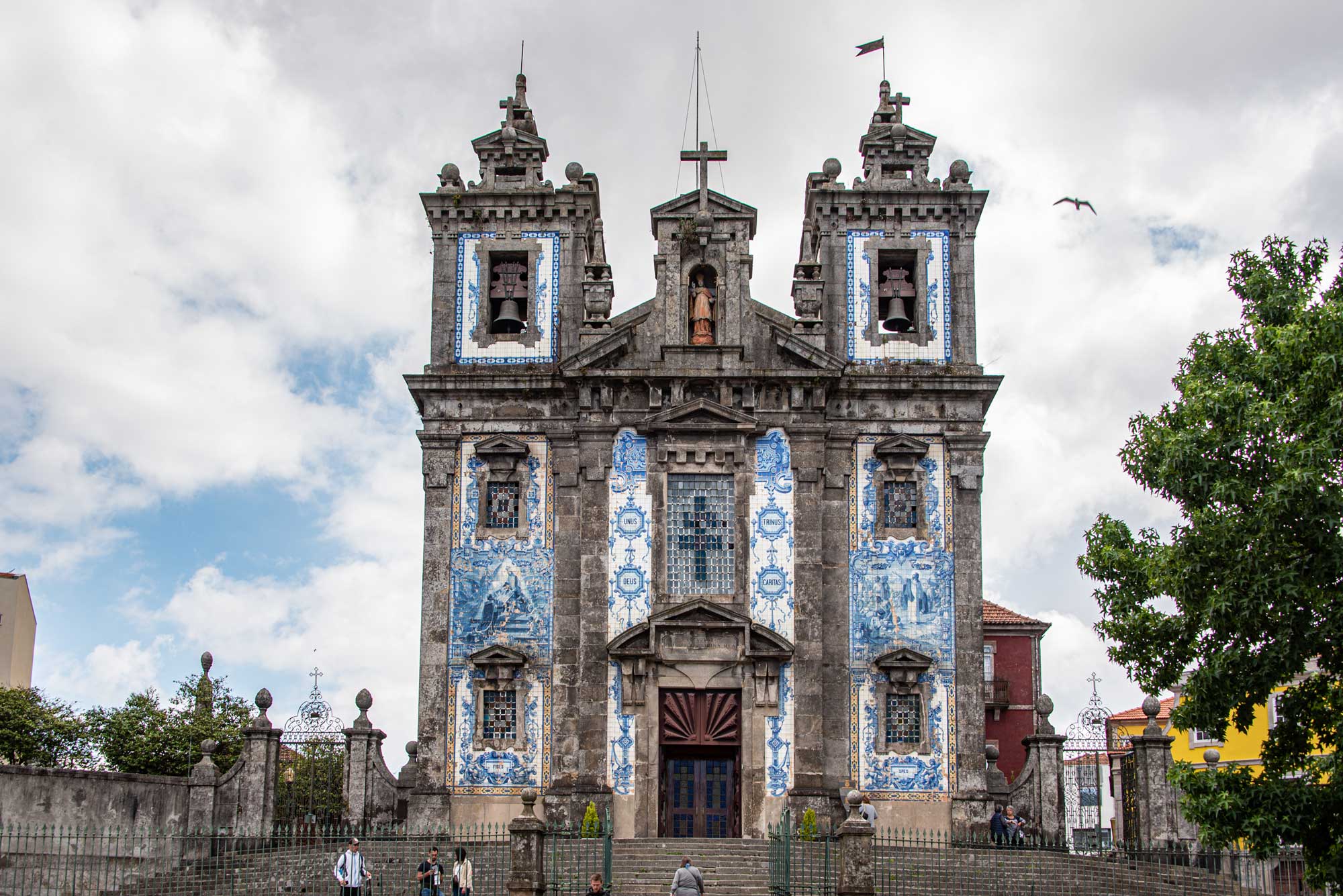Pictured above: The sun breaks through the clouds to light up the grapevine-covered hillside above the town of Pinhão in the Douro Valley
The Fiat Takes Us North
I learned to drive with a manual transmission on a used 1960 Vauxhall and still enjoy a “stick shift” when driving in Europe. So it was, with our white Fiat hatchback rental. We packed our bags, loaded them in the trunk, and headed northeast out of Lisbon, towards the Douro River Valley. I “popped the clutch” a few times with lurches and stalls, but once I settled into the Fiat’s rhythm of gears, it was (mostly) smooth sailing on the good road system. An hour north of the city, we stopped at Óbidos, the first of several medieval towns we visited in northern Portugal.
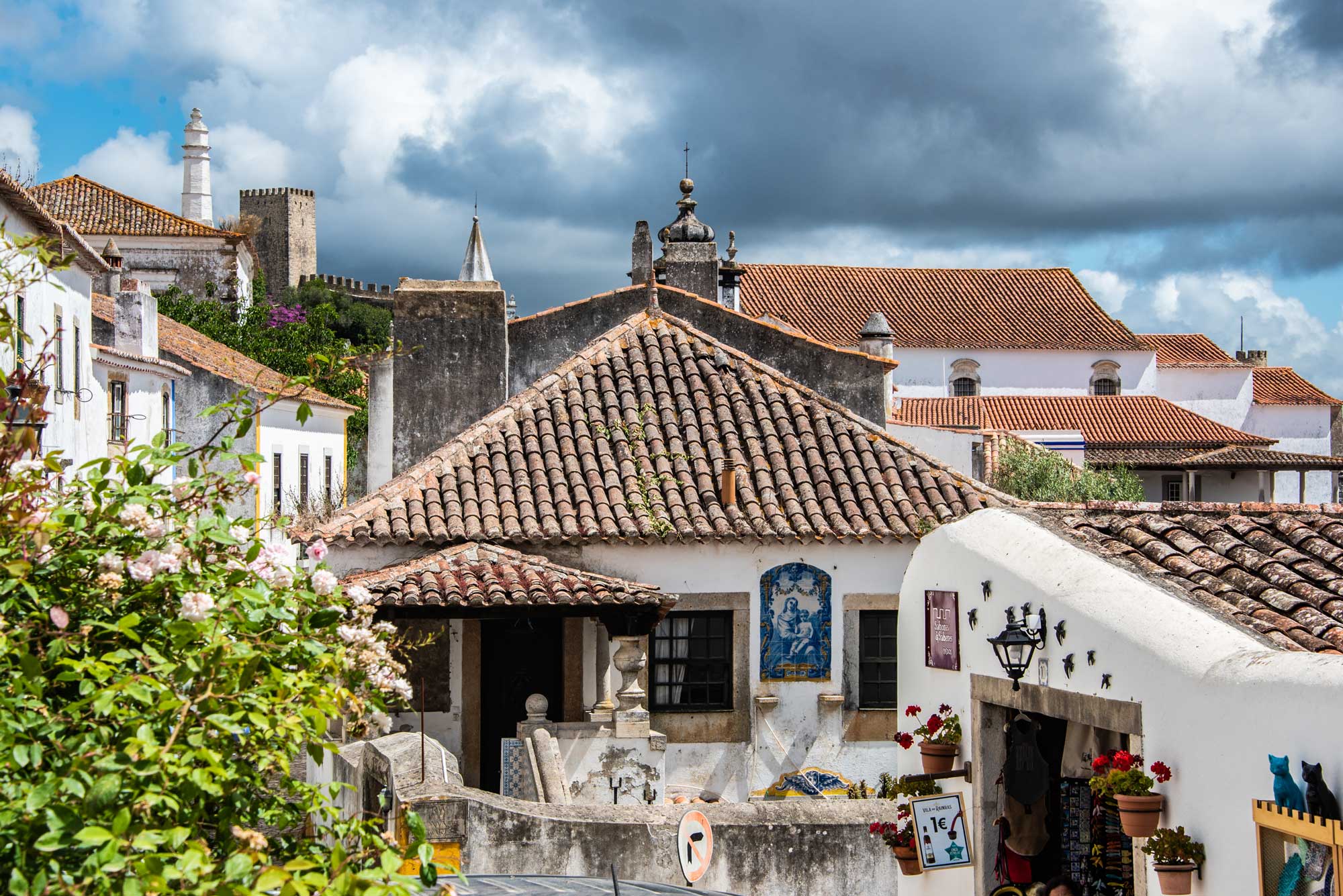
Visiting Obidos
I pulled the Fiat into the crowded car and bus parking lot outside the main entrance gate to the small medieval walled town, utterly charming and on everyone’s list of sites to visit. The castle walls (we saw visitors walking the broad ramparts) surround the entire town of 3100 residents, and a “bard” in period clothes played and sang tunes reminiscent of Gothic period music to welcome troops of visitors though the main gate.
Trinket and craft shops, breweries and restaurants line the cobblestoned, narrow main street, its whitewashed two-story buildings trimmed in bright hues. Colorful annual flowers filled window boxes, while red, magenta, and pink-flowered bougainvillea vines climbed walls. From the vantage point of a parallel street uphill, the red tiled roofs of the compact town show off its attraction as a movie set village. As if on cue, we heard children singing from a small school we passed, while workmen repaired the cracked wall of a white stuccoed house, its steps lined with potted red geraniums. A beautiful village crowded that day with tourists, Óbidos is a bit staged for my taste, but its quaintness and its location near Lisbon make it a stop on everyone’s itinerary.
Lunch in Nazaré
Hunger prompted us to take a suggested detour to Nazaré, a seaside resort reached after a steep decline from the headlands to the water. Lively and unpretentious, the back streets of the town retain many characteristics of its fishing village origin. The sea-facing street contained small hotels, eateries, and souvenir and sweatshirt shops. Famous among surfers worldwide, Nazaré hosts the world’s tallest waves, formed as the result of an unusual underwater canyon close to the coastline. The record wave height to date is 101.4 feet, successfully surfed in October 2020 by António Laureano, whose mother must have wanted to kill him for attempting such a crazy feat.
Lunch, though, was our goal, and we chose a restaurant behind the main drag whose many patrons seemed to be local, always a good sign. A waiter directed us to the only table available, next to the kitchen’s busy swinging door. Rick selected a plump red snapper from an ice-filled tray displaying a dozen freshly caught fish, and the chef turned it into a perfectly scrumptious grilled entrée, the skin a crispy char from the high heat cooking method traditional in Portugal. Those tasty baby clams I became obsessed with in Lisbon set the stage for the main course. The Portuguese surely know what they’re doing with edibles from the sea.
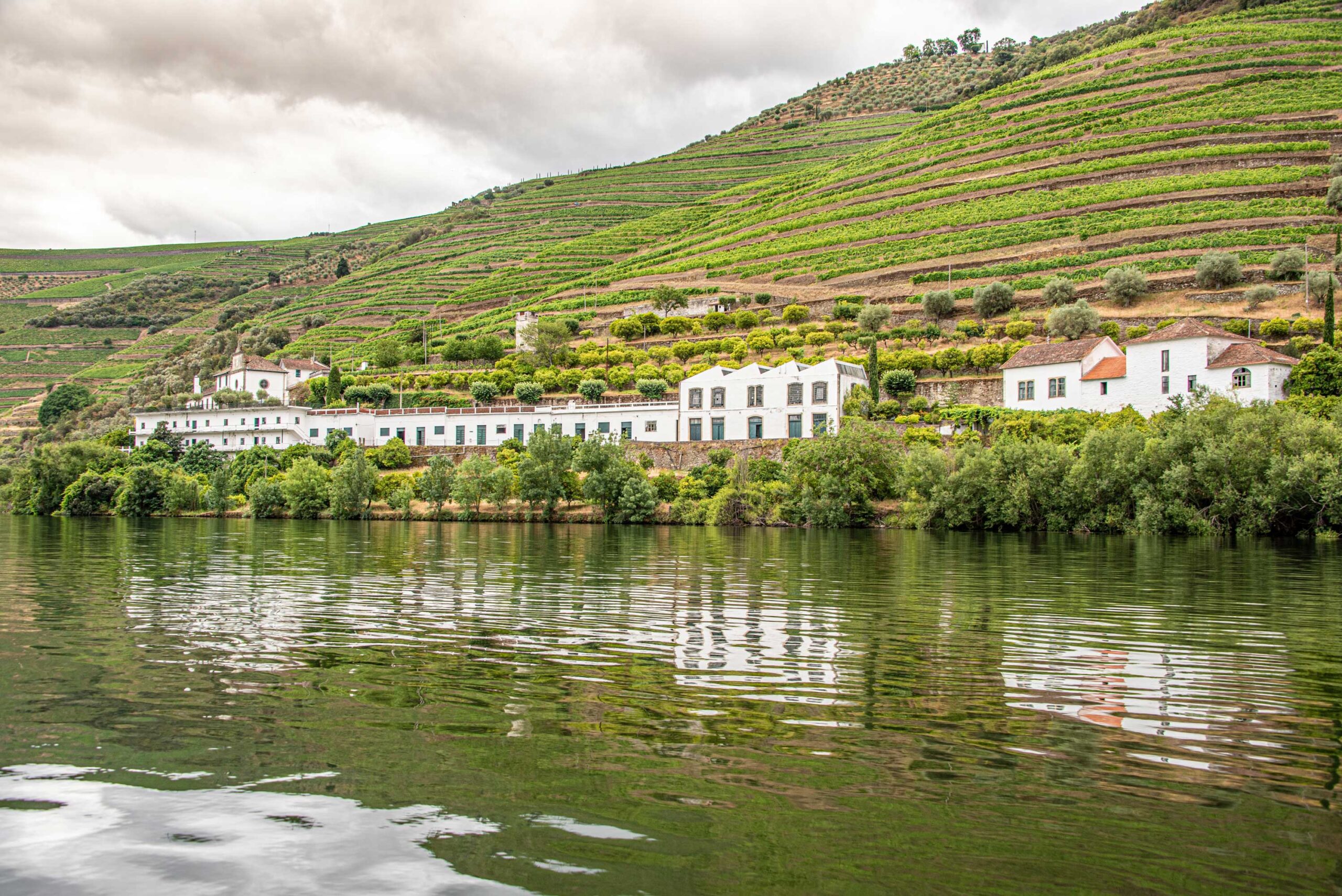
The Vineyards in Douro Valley are Europe’s oldest
Once we left the four-lane highway, the last 20 miles of twisting, nail-biting, hairpin-curved, narrow two-lane road (no guardrails) led us to the postcard-perfect town of Pinhão in the Douro River Valley’s heartland. Portugal’s lush, picturesque wine-growing region is the oldest viticulture area in Europe and named a World Heritage site. A visually grand landscape, neatly lined vineyards drape the river’s steep undulating hillsides, which are divided into large agricultural estates called quintas. Many of these quintas include lodging and restaurants as part of their businesses, in addition to growing grapes and producing wine.
At Quinta de la Rosa, located downriver within sight of Pinhão, our room had a balcony with chairs where we enjoyed a glass of the estate’s own house wine while the quiet beauty of the Douro River and surrounding vine-covered hillsides made us forget the stress of driving to reach the valley.
The next morning, we boarded a rabelo at the town dock, the once main transportation vehicle to move kegs of wine downstream to the coastal city of Porto. For two hours the rabelo carried its twenty guests upriver and back to view the miles of vineyards on both steep riverbanks. The patterns of the rows shifted constantly to accommodate the changing landscape contour.
Traveling to Porto and the Portuguese Coast
Following the direction of the Douro River west to the coast I turned the Fiat back towards the Atlantic Ocean, first stopping at the UNESCO World Heritage atmospheric city of Guimarães, considered an excellent example of a medieval settlement that successfully transformed into an attractive modern town. Over the centuries, builders created a unique Portuguese architectural style. Uniform rows of windows, doors, and balconies characterize residences and storefront buildings, and the city’s well-preserved center exemplifies this architectural symmetry.
As urban aficionados, we immediately loved Porto, Portugal’s second largest city. In recent years the city has been “rediscovered” as one of Europe’s cultural treasures. Porto lent its name to port wine produced upstream in the Douro Valley and to the name of the country itself.
Palpable urban beat characterized shopping thoroughfares, restaurants, historical buildings, and monuments, amidst the renovation buzz of formerly empty residential and commercial buildings. While Baroque is the dominant architectural style of the city, gems of several periods—Renaissance, Gothic, Beaux Arts, Art Nouveau, Art Deco––all comfortably share Porto’s architectural landscape.
The hotel concierge mapped out a walking tour, and we hit the streets to take in sights, sounds, and rhythms of the UNESCO World Heritage-designated Historic Center of Porto. Workers hurried past flocks of gawkers carpeting sidewalks. Too often they stood in front of my camera’s view, and I caught myself hypocritically disparaging these “hapless tourists.” We later learned that we arrived the day of the São João Festival (Saint John), to be celebrated that evening, and Porto bulged with revelers. A steady downpour unfortunately dampened the evening’s festivities.
Lively Porto Dazzles
Exploring a new urban center rich like Porto calls all my senses to attention. Also built on a series of hills like its bigger sister Lisbon, from our vantage point the city’s sloping topography gave us an exciting panorama of majestic and handsome buildings, jostling vehicles and touring crowds. Our morning walkabout revealed many architectural treasures.
Those blue tiles I mentioned in the previous Lisbon article called azulejos cover the lobby’s walls of the spectacular, not-to-be-missed São Bento (Saint Benedict) railway station, completed in 1916. They depict rural scenes from Portuguese life, religious festivals, and successful military battles. The city’s Romanesque-style cathedral (Sé do Porto) dominates the city’s highest hill. Its surrounding plaza affords a sweeping view of the old city, Douro River and wine storage and distribution neighborhood on the other side. We opted not to stand in the long line to enter this massive structure, rather to walk in the beautiful sunshine to experience the city’s dazzle.
While a mere neighborhood place of worship, the mid-eighteenth-century Baroque-styled Church of Saint Ildefonso displayed its uniqueness, the façade clad in azulejo tiles, though they needed repair. A pair of side-by-side churches––a seventeenth century one built for Carmelite nuns, the other for Carmelite monks in the eighteenth century––are separated by a very narrow, three-foot-wide “residence” ostensibly constructed to keep the men and women apart. I found the Portuguese Center for Photography the most evocative experience of the day. As Porto’s former prison and Court of Appeals, its foreboding walls and cavernous stone interior rooms provided stark relief for the Avant-garde image exhibitions, making an exhilarating museum visit.
The entrance lobby’s walls of Saint Benedict (São Bento) Railway Station display scenes of historic Portuguese life in azulejo tiles.
After a morning exploring this visually rich city, we joined a pre-designated food tour. I confess I wasn’t enthusiastic about committing to this tour when we initially planned the trip. A touristy gimmick, perhaps? Was my attitude adjusted when we met up with a group of eight other travelers––from Northern Ireland, Australia, Switzerland, and USA––for what turned out to be a fascinating and fun experience. Company founder and former engineer André Apolonário, owner of Taste Porto Food Tours, led us through the handsome and animated streets to five eateries, each with its own behind-the-scenes history. André obviously loves his hometown, and his exuberant story-telling style linked the tasty indigenous treats and local wines we sampled to Portugal’s culture, politics, and family traditions.
Stay tuned for a separate blog post coming soon about this unique experience.
Our conclusion when it was time to leave: a 36 hour-stay in vibrant Porto was not enough! We vowed to return.
Back in the Fiat, a day-long rain tracked with us as we turned south to experience more of Portugal’s cultural jewels during our last few days of the trip. With poor visibility, I exited a major highway too soon, tried to back up the 20 feet to get onto the highway again, and crunched into a sign. A clear, hard-to-hide crease ran down the Fiat’s trunk door.
